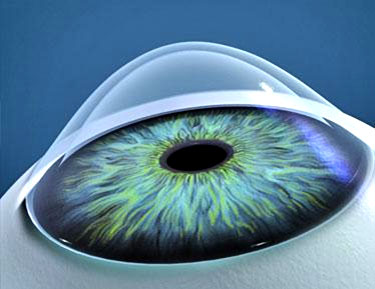Kerarings
Eye Surgery
What are Kerarings?
Kerarings, also known as corneal implants or intra-corneal ring segments (ICRS), are a surgical treatment for keratoconus. These small, transparent semi-circular rings are implanted into the cornea. When positioned, they aim to flatten and regularise the shape of the distorted cornea. Kerarings can improve the quality of life for keratoconus sufferers as the change in vision that results can make glasses and/or contact lenses easier to tolerate.
Kerarings may also be used in conjunction with corneal cross-linking (CXL) to achieve further stabilisation in the cornea.
Kerarings are removable and replaceable. If the Kerarings are removed, the cornea will revert to its original shape.
What is Keratoconus?
Keratoconus is a degenerative condition of the eye that involves thinning of the cornea (the transparent, front surface of the eye). As a result of the thinning, the normal shape of the cornea becomes distorted and a cone-shaped bulge develops, resulting in a progressive blurring of the vision.
People who suffer from keratoconus can experience distortion of their vision including multiple images, sensitivity to light and ‘streaking’. The level of visual distortion can vary, but if both eyes are affected keratoconus can interfere with the ability to read or drive a car.
Keratoconus typically develops between the ages of 16 and 30 years of age and although the exact cause remains unknown. Recent research indicates there may be a genetic origin. Excessive eye rubbing could also be a contributing risk factor.
People who suffer from keratoconus usually wear glasses or hard/rigid contact lenses to treat their blurry vision. However, if your keratoconus is severe glasses may not provide a good quality vision and if you suffer from allergies or dry eyes, contact lens wear can become problematic.

Learn more about Keraring Surgery
Kerarings are often chosen for patients diagnosed with keratoconus who have visual symptoms related to:
- Moderate to high short-sightedness (myopia)
- Severe astigmatism
- Irregular astigmatism
Usually, candidates for Kerarings will have been unsuccessful in wearing glasses or contact lenses or have become contact lens intolerant.
When you arrive at VISTAeyes on the day of your procedure, you will have an opportunity to meet with Dr Wolfe again to discuss any further questions or concerns you may have about your surgery.
We will demonstrate how to use your post-operative eye drops and explain any restrictions you may have following your procedure.
At this stage we will offer you a mild sedative to help you relax for your Keraring surgery. You will remain awake for the procedure.
Immediately before your surgery we will use anaesthetic eye drops to numb your eye.
A fine tunnel must be created in the cornea to allow Dr Wolfe access to the deeper layers of the cornea where the Keraring is placed. At VISTAeyes, Dr Wolfe makes this tunnel using a femtosecond laser.
He will position an instrument between your eyelids to hold your eye still while he creates the tunnel using the Wavelight® FS200 femtosecond laser. You will only feel some pressure on your eye for around 30 seconds.
A small instrument will be place between your eyelids to prevent blinking while Dr Wolfe places the Keraring into the tunnel.
After the surgery, you will be given a pair of eye shields to wear to protect your eyes from accidental knocks or bumps as they heal.
Your eyes will examined before you leave VISTAeyes and then we recommend you head home and have some time to relax. You will need someone to drive you home.
Dr Wolfe will provide you antibiotic and anti-inflammatory drops to use for at least one week after the surgery to assist healing and prevent infection. Most patients resume normal activities within approximately 24 hours after the surgery.
The risks are low and often only minor if they occur. Infection rates are low, making Kerarings implantation a very safe procedure, but like all surgical or medical procedures, there is always a risk of complication. All known complications will be discussed at your consultation.

Meet your Surgeon
Dr Rick Wolfe is one of Australia’s most accomplished and experienced Laser Eye Surgery Specialists. He is globally recognised and is regularly invited to present on his surgical expertise and latest innovations at international eye surgery conferences.
Schedule your initial consultation today
Come in to learn all about Keratoconus and for your comprehensive eye examination.
- Free parking onsite
- Complimentary tea, coffee, soft drinks, filtered water and biscuits

"Required" indicates required fields